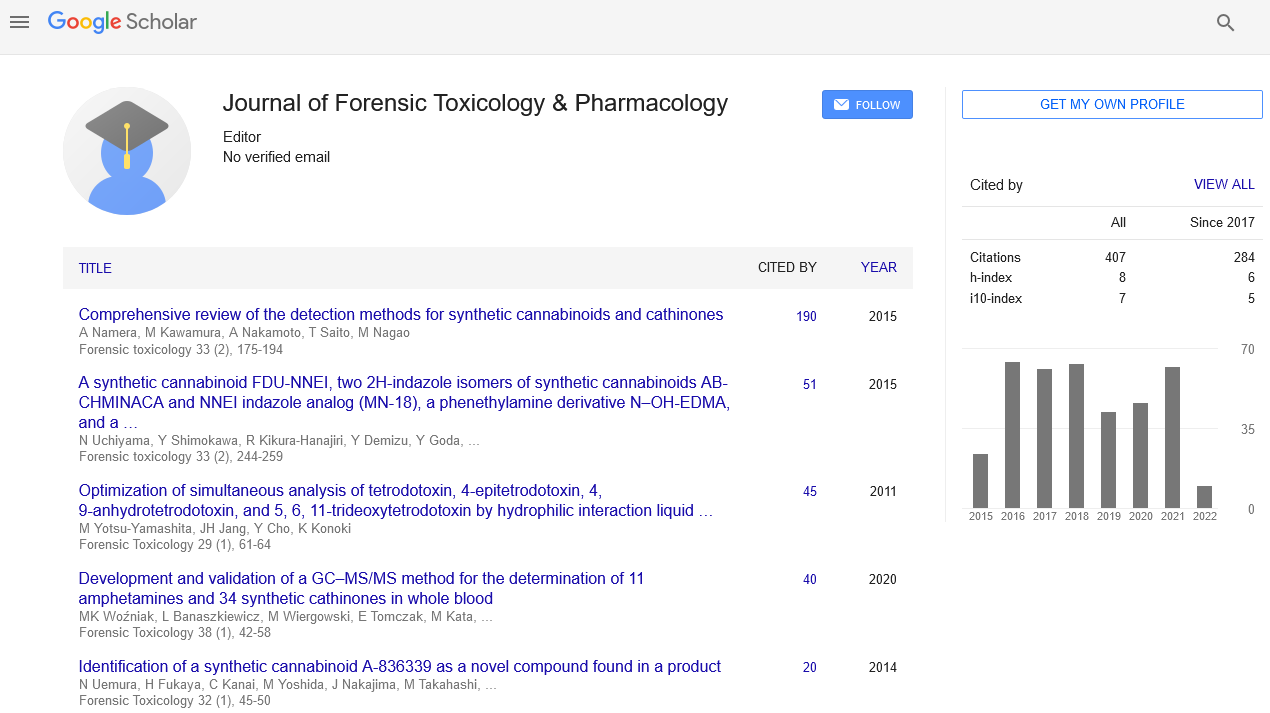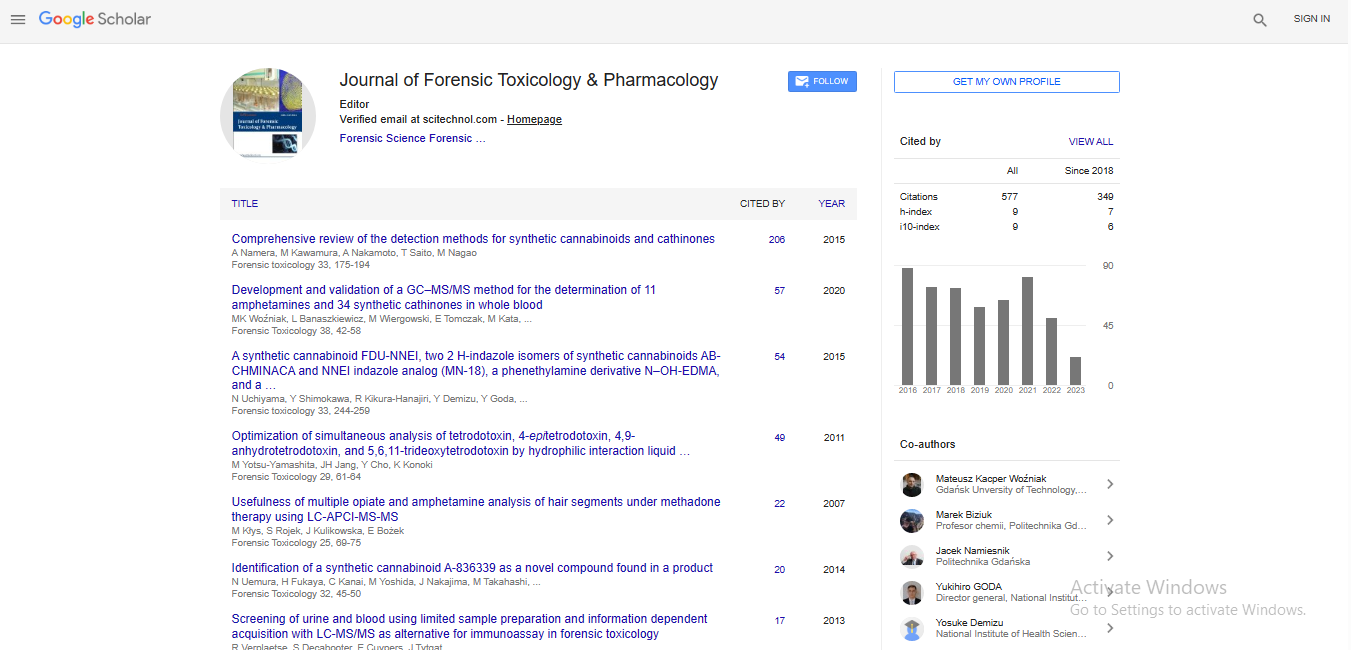Research Article, J Forensic Toxicol Pharmacol Vol: 2 Issue: 2
Disposition and enterohepatic circulation of intravenously administered 11-nor-9-carboxy-Δ9-tetrahydrocannabinol in serum and urine in healthy human subjects
| Elisabeth Böhnke1, Lisa Dietz2, Tilman Heinrich1, Rolf Aderjan2, Gisela Skopp2, Gerd Mikus1* | |
| 1Department of Clinical Pharmacology and Pharmacoepidemiology, University Hospital, Im Neuenheimer Feld 410, 69120 Heidelberg, Germany | |
| 2Institute of Legal and Traffic Medicine, University Hospital, Voss-Str. 2, 69115 Heidelberg, Germany | |
| Corresponding author : Gerd Mikus Department of Clinical Pharmacology and Pharmacoepidemiology, Im Neuenheimer Feld 410, 69120 Heidelberg, Germany Tel: +4962215639197; Fax: +496221564642 E-mail: gerd.mikus@med.uni-heidelberg.de |
|
| Received: June 14, 2013 Accepted: July 27, 2013 Published: August 03, 2013 | |
| Citation: Böhnke E, Dietz L, Heinrich T, Aderjan R, Skopp G, et al. (2013) Disposition and Enterohepatic Circulation of Intravenously Administered 11-Nor-9-Carboxy-Δ9-Tetrahydrocannabinol in Serum and Urine in Healthy Human Subjects. J Forensic Toxicol Pharmacol 2:2. doi:10.4172/2325-9841.1000107 |
Abstract
Disposition and Enterohepatic Circulation of Intravenously Administered 11-Nor-9-Carboxy-Δ9-Tetrahydrocannabinol in Serum and Urine in Healthy Human Subjects
Verification of abstinence from Cannabis use is the second most frequently encountered analytical task beside alcohol misuse in driving cases, conditions of probation and patients during maintenance treatment. In both blood and urine, detection of 11-nor-9-carboxy-Δ9-tetrahydro-cannabinol (THC-COOH) is most appropriate considering its long half-life. In addition, THC-COOH has been hypothesized to be a marker of the extent of Cannabis use. Nevertheless, there is only limited knowledge on the direct disposition of THC-COOH in humans which is formed from Δ9-tetrahydrocannabinol (THC) by oxidative breakdown.
 Spanish
Spanish  Chinese
Chinese  Russian
Russian  German
German  French
French  Japanese
Japanese  Portuguese
Portuguese  Hindi
Hindi 
